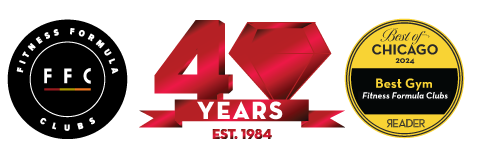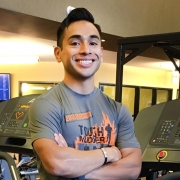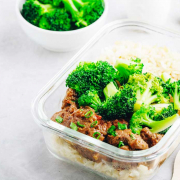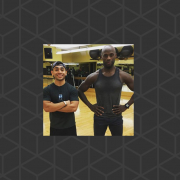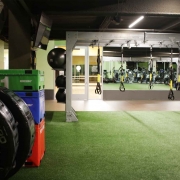My Resting Metabolic Rate Test Experience & What I Learned
FFC group fitness instructor Omar Romero shares his experience with a resting metabolic rate test and what he gained from it.
As I continue to incorporate fitness into my life, I always ask myself if I’m eating enough. Am I eating enough food to not only maximize my workouts, but also get through the work day without feeling sluggish?
I started evaluating how many calories I was taking in a day with MyFitnessPal and deducting my calories burned via Myzone. The app would show that I needed to eat more calories, but I wasn’t sure if the number was accurate. I found myself asking ‘how many calories should I be eating?’ ‘What does my body need to get through the day?’ ‘What does my body need to get through the day when I work out?’ ‘What does my metabolism look like?’
I work out in the morning before work, and sometimes during lunch if I’m following a two-a-day schedule. I found myself getting the afternoon crash (post-lunch) but, it wasn’t because I ate too much. I have a shake around 1 PM with vegetables, so I knew it wasn’t the food I was taking in. I started looking at ways to discern if I was 1) eating enough, and 2) if not, how to find out how many calories I should be eating. I contacted FFC registered dietitian Alicia Huggler for advice – I went to her because she especially understands the needs of someone who manages a daytime career while also balancing fitness. She recommended I take a resting metabolic rate (RMR) test to discover some of my baseline numbers.
What is a resting metabolic rate analysis?
An RMR analysis tells you precisely how many calories your body burns all day, every day, just to stay alive. This does not include any activity such as exercising, sports, and/or everyday movement. This analysis evaluates your body at rest.
Why is knowing your resting metabolic rate important?
The RMR analysis is important because it will help you identify what your body does on a day to day basis as it pertains to calorie consumption. Think about keeping your car on at idle. If you’re someone who engages in daily physical activity, the data gleaned from this test can be crucial to performance outcome and recovery.
Why is recovery important?
As you can tell, I skipped over performance outcome because I believe it goes without saying that you need fuel to perform. You need fuel to recover because your muscles need the nutrients. If skipped, you may experience low blood sugar, feeling fatigue, or an injury. I’m not a sports doctor so I will not dive into that subject. Case in point, food is necessary after a workout.
What did I learn from my resting metabolic rate test?
Before I dive into what I learned from my resting metabolic rate test, please be aware that results and their outcomes will vary from person to person, and it’s important to understand that what might work for one person, might not work for another. It’s similar to the way some people fuel their bodies with fat instead of carbohydrates (such as in Paleo or Keto). Everyone burns fuel differently and at different rates. This analysis takes your metabolic rate and compares it to what is considered “normal” for your age, height, weight, and sex.
Based on your results, the analysis will tell you whether you need to increase or decrease the amount of food you’re taking in daily. This will give you the data you need to understand what your body needs.
For example, I learned that for someone with my physical activity level and metabolic rate, I need to take in more food through the day. I needed to increase the amounts of fat being taken into my system. I physically looked like I was healthy, but my insides where asking for fuel. You can only operate at that level for so long before you experience negative effects.
Final Thoughts
Whether you’re an athlete, someone who exercises moderately or are just curious about how your body functions, I recommend taking the time to understand the vehicle of life, which is your body. You evaluate the way you perform at work – why not see the way your body performs at life?
Post written by FFC group fitness instructor Omar Romero.
About Omar

Omar is a group fitness instructor at FFC – you can catch him teaching Total Body Blast, FitCore and other formats. You can also follow along with him on Facebook here or Instagram here!

